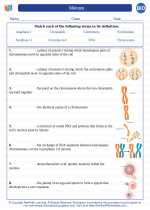Clams: An Overview
Clams are a type of mollusk belonging to the class Bivalvia. They are characterized by their two-part shell, which is hinged at one end and can open and close to protect the soft body inside. Clams are found in both freshwater and marine environments, and they play important ecological roles as filter feeders, helping to maintain water quality by consuming plankton and organic matter.
Anatomy of a Clam
A typical clam has a soft body enclosed in a two-part shell, which is made of calcium carbonate and is lined with a layer of shiny material called nacre. The soft body consists of organs for digestion, respiration, and reproduction. Clams also have a muscular foot that they use for burrowing into sand or mud.
Reproduction and Life Cycle
Clams reproduce by releasing eggs and sperm into the water, where fertilization occurs. The fertilized eggs develop into larvae, which undergo a process of metamorphosis before settling to the bottom and developing into adult clams. Some species of clams can live for many years, with some individuals reaching ages of 100 years or more.
Ecological Importance
Clams play a crucial role in the ecosystems they inhabit. As filter feeders, they help to cleanse the water by removing suspended particles and excess nutrients. Additionally, clams are an important food source for many animals, including birds, fish, and other invertebrates.
Clams and Human Society
Clams have been harvested by humans for thousands of years and are an important food source in many cultures. They are also used in scientific research and have economic significance as a seafood product.
Study Guide
- What are the main characteristics of clams?
- Describe the anatomy of a clam, including its shell and soft body parts.
- Explain the reproductive process of clams and their life cycle.
- Discuss the ecological importance of clams in aquatic ecosystems.
- How do clams contribute to human society, both historically and in the present day?
For a more in-depth understanding of clams, consider researching specific species of clams, their habitats, and their adaptations to different environments.
.◂Biology Worksheets and Study Guides High School. Meiosis

 Worksheet/Answer key
Worksheet/Answer key
 Worksheet/Answer key
Worksheet/Answer key
 Vocabulary/Answer key
Vocabulary/Answer key
 Vocabulary/Answer key
Vocabulary/Answer key
 Vocabulary/Answer key
Vocabulary/Answer key
